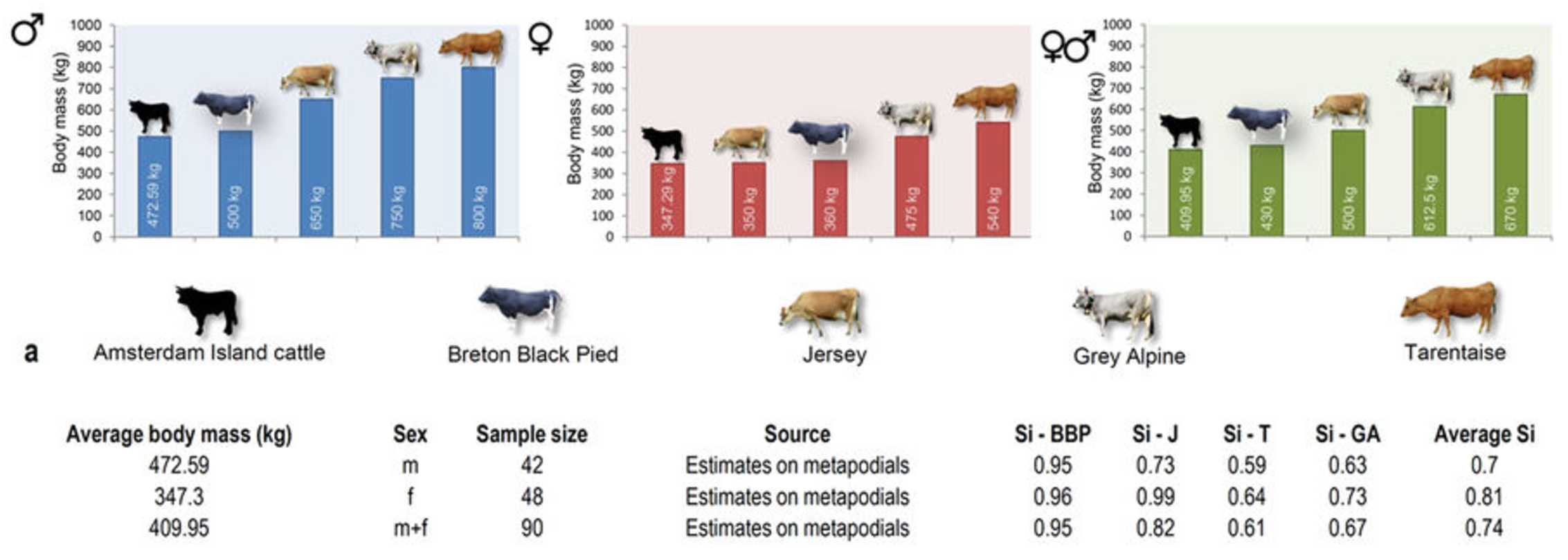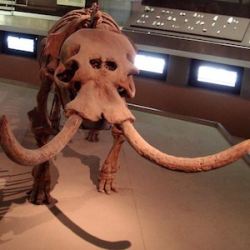Biologists have long known that small animal species, if they migrate from the mainland to an island or other isolated habitat, will evolve over time to become larger. Conversely, large animal species evolve to become smaller, a phenomenon referred to as "insular dwarfing." Combined, these two observations have led to the "island rule," which suggests that animals on islands evolve to an intermediate size.
Like most evolutionary modifications, changes to the average body size of an entire species generally take thousands of years. But now, researchers describe wild cattle on Amsterdam Island in the southern Indian Ocean that lost about 25% of their body size in just over 100 years.
In 1871, five cattle were introduced to the island. The cattle were descendants of four different breeds of varying sizes: Breton Black Pied (430 kg), Jersey (500 kg), Grey Alpine (612.5 kg), and Tarentaise (670 kg). The authors assumed that all four breeds were represented on Amsterdam Island, so they calculated the average mass of the four breeds to be 553 kg.
Then, using data collected in the late 1980s on the size of the animals, they calculated by how much the Amsterdam Island cattle had shrunk. (See figure.)

As shown in the right-hand part of the figure (as well as in the third row of text), the average Amsterdam Island cattle was nearly 410 kg. If the founding population had an average mass of 553 kg, then the cattle were only 74% of their original size after 117 years.
Limitations
Even if the authors' assumption about the founding population is wrong, the cattle still shrank. Let's assume, for the sake of argument, that all the cattle descended from the Breton Black Pied breed. That breed had an average mass of 430 kg, which is 5% more massive than the Amsterdam Island cattle. (This is unlikely, though, because the cattle had coat colors that clearly indicate ancestry from larger cattle.)
It should also be noted that the founding population itself came from another island, Réunion. So, it is possible that the cattle had already dwarfed by the time they arrived at Amsterdam Island. However, the authors note that this too is unlikely since the Réunion Island cattle hadn't been there for very long. Besides, there are no records of dwarfing among the Réunion Island cattle.
Those of you who wish to visit Amsterdam Island to witness evolution in action are sadly out of luck. Because the cattle were threatening the native plants and animals, they were exterminated in 2010.
Source: Roberto Rozzi, Mark V. Lomolino. "Rapid Dwarfing of an Insular Mammal – The Feral Cattle of Amsterdam Island." Scientific Reports 7, Article number: 8820. Published: 18-Aug-2017. doi: 10.1038/s41598-017-08820-2

